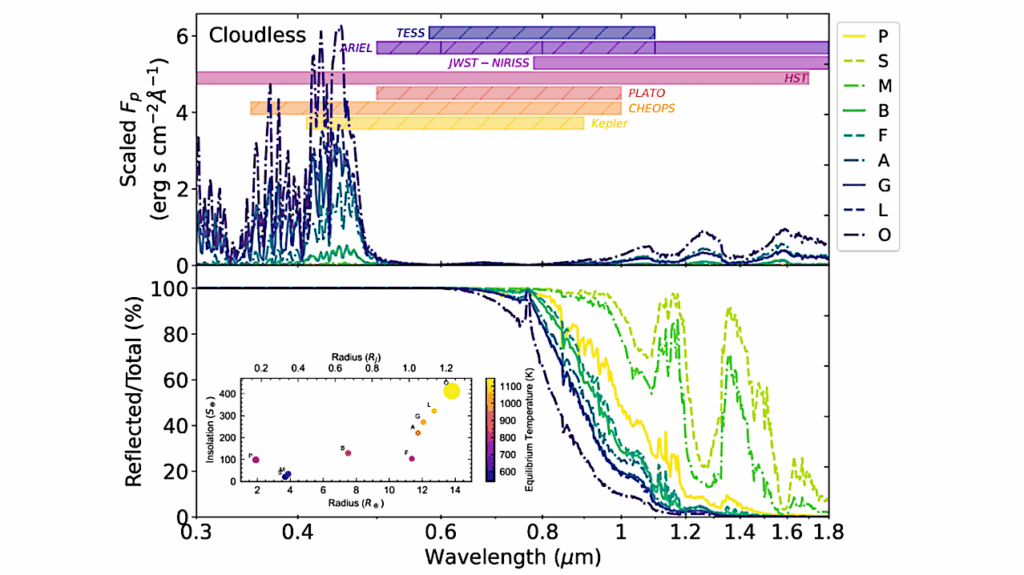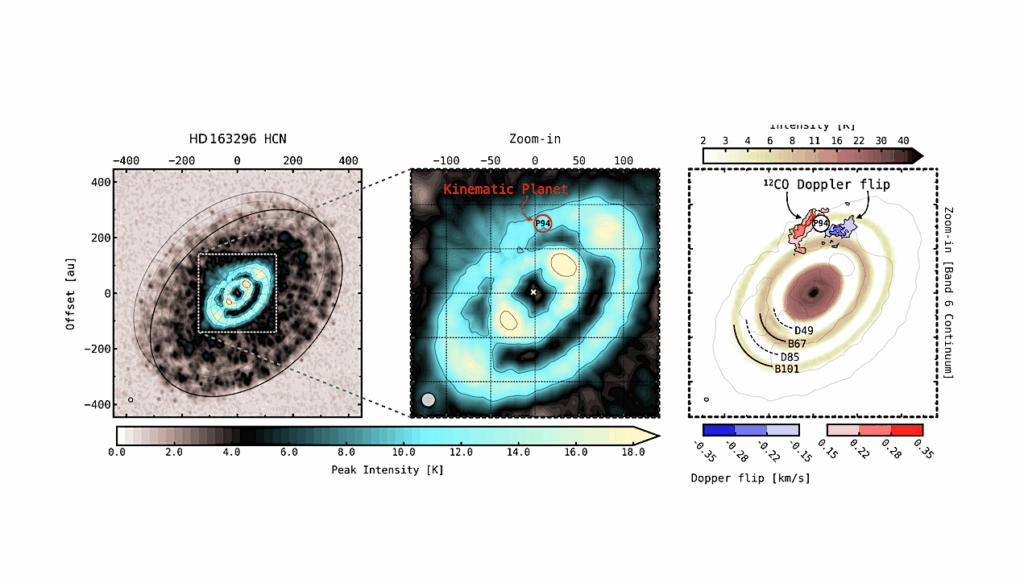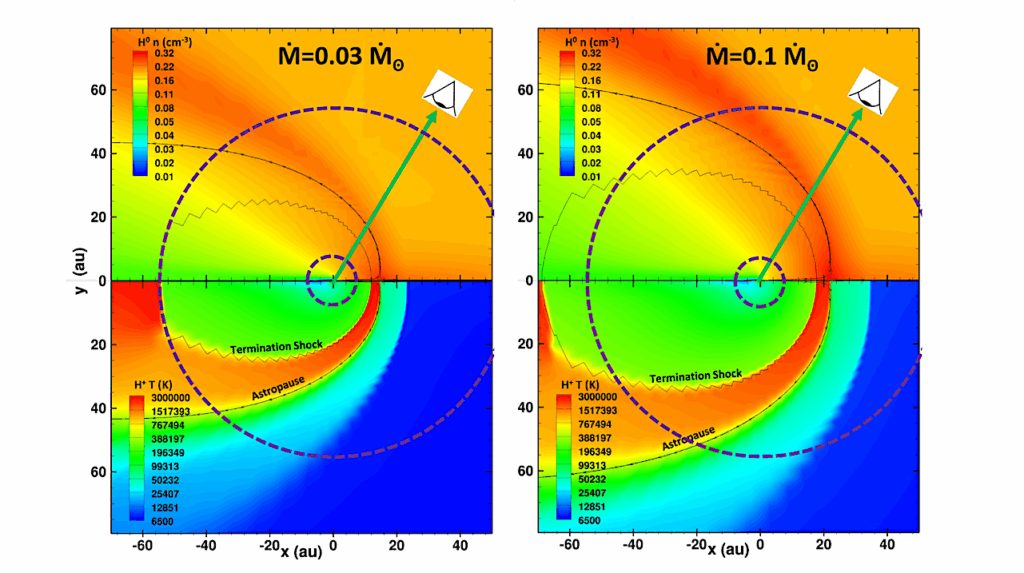The Space Weather Around The Exoplanet GJ 436 b. II. Stellar Wind-exoplanet Interactions

The M dwarf star GJ 436 hosts a warm-Neptune that is losing substantial amount of atmosphere, which is then shaped by the interactions with the wind of the host star. The stellar wind is formed by particles and magnetic fields that shape the exo-space weather around the exoplanet GJ 436 b.
Here, we use the recently published magnetic map of GJ 436 to model its 3D Alfvén-wave driven wind. By comparing our results with previous transmission spectroscopic models and measurements of non-thermal velocities at the transition region of GJ 436, our models indicate that the wind of GJ 436 is powered by a smaller flux of Alfvén waves than that powering the wind of the Sun. This suggests that the canonical flux of Alfvén waves assumed in solar wind models might not be applicable to the winds of old M dwarf stars.
Compared to the solar wind, GJ 436’s wind has a weaker acceleration and an extended sub-Alfvénic region. This is important because it places the orbit of GJ 436 b inside the region dominated by the stellar magnetic field (i.e., inside the Alfvén surface).
Due to the sub-Alfvénic motion of the planet through the stellar wind, magnetohydrodynamic waves and particles released in reconnection events can travel along the magnetic field lines towards the star, which could power the anomalous ultraviolet flare distribution recently observed in the system. For an assumed planetary magnetic field of Bp≃2 G, we derive the power released by stellar wind-planet interactions as P∼1022 — 1023 erg s−1, which is consistent with the upper limit of 1026 erg s−1 derived from ultraviolet lines.
We further highlight that, because star-planet interactions depend on stellar wind properties, observations that probe these interactions and the magnetic map used in 3D stellar wind simulations should be contemporaneous for deriving realistic results.
A. A. Vidotto, V. Bourrier, R. Fares, S. Bellotti, J. F. Donati, P. Petit, G. A. J. Hussain, J. Morin
Comments: 12 pages, 7 figures, 1 table; accepted for publication in A&A
Subjects: Solar and Stellar Astrophysics (astro-ph.SR); Earth and Planetary Astrophysics (astro-ph.EP)
Cite as: arXiv:2309.00324 [astro-ph.SR] (or arXiv:2309.00324v1 [astro-ph.SR] for this version)
https://doi.org/10.48550/arXiv.2309.00324
Focus to learn more
Submission history
From: Stefano Bellotti
[v1] Fri, 1 Sep 2023 08:15:13 UTC (4,117 KB)
https://arxiv.org/abs/2309.00324
Astrobiology








